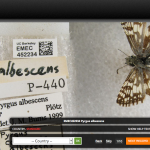
Human brain mapped with diffusion tensor imaging. Credit: The Laboratory of Neuroimaging and Martinos Center for Biomedical Imaging, www.humanconnectomeproject.com
The Obama administration may urge Congress in March to invest billions of dollars to develop biotechnology and nanotechnology tools for the creation of comprehensive maps of brain activity that can help diagnose and treat brain diseases. The plan has already ignited debate, with critics questioning the massive expenditure for a single, high-risk project in the face of the United States’ uncertain research budget climate.
The inspiration for the ambitious project, called the Brain Activity Map, is a ‘white paper’ published in the journal Neuron in June 2012. The authors of the paper, including first author A. Paul Alivisatos of Lawrence Berkeley National Lab, brainstormed the core concepts of the project in a series of workshops over the past two years sponsored by the Kavli Foundation.
During his State of the Union address this past Sunday, President Obama called out brain research as an example of the type of investment the government should be making. He alluded to the success of the Human Genome Project as a goal to which the Brain Activity Map could aspire. “Every dollar we invested to map the human genome returned $140 to our economy — every dollar,” Obama said. The authors of the Neuron paper also make the bold claim that their project “will have comparable ramifications.”
The Human Genome Project cost $3.8 billion over the course of 10 years. If the Brain Activity Map garners similar funding over a comparable time frame, it would eat up roughly 1 percent of the total NIH budget, which was $31 billion in 2013. That doesn’t sound like a lot. However, the average annual value of a NIH grant awarded to a university researcher is $400,000, which pays for equipment and salaries for graduate students and postdocs. So, for 10 years, this single brain project could tie up the resources that would normally fund 750 different projects per year.

Major pathways of the brain mapped out by NIH Human Connectome Project. Credit: MGH-UCLA Human Connectome Project
The Brain Activity Map project, if funded, would come three to four years after the initiation of another high profile, multi-institution brain mapping project called the Human Connectome Project, funded for $30 million from 2010 to 2015. A connectome is a detailed map of the full set of neurons and synapses within the nervous system of an organism. The Human Connectome Project is an attempt to describe the complete wiring diagram of the human brain, which will be generated from fMRI scans of 1,200 twin and non-twin sibling subjects.
Sounds impressive, right? Well, in reality, unlike the already completed wiring diagram of the 302 neurons of the round worm C. elegans and the under-construction wiring diagram of the mouse brain, the Human Connectome Project wiring diagram will be at the level of functional brain areas, not at the level of individual neurons.
Proponents of the Human Connectome Project say the wiring diagram will reveal anatomical and functional connectivity and provide important insights about mental illness and developmental disorders and their genetic factors. However, the fMRI scans will show a brain’s resting state but will not speak to how the brain reacts to outside stimuli. David Kleinfeld, physics and neuroscience research at UC San Diego told Nature: “I would do the basic neuroscience before I started running lots of people through MRI scanners.” A New York Times article that was otherwise in favor of the project, quoted Bobby Kasthuri, one of the Harvard researchers working on the project, as saying: “It will either be a great success story or a massive cautionary tale.” And that was for a project with one one-hundredth the price tag.
The Brain Activity Map project, on the other hand, hopes to deliver a dynamic, “functional connectome” that its leaders claim would transcend the Human Connectome Project’s static, “structural connectome”. The goal of the Brain Activity Map project will be to “record every action potential from every neuron within a circuit,” according to the Neuron paper. Unfortunately, it will take up to 15 years of technological development to even get to the point of recording neural circuits from human subjects.
Some neuroscience researchers have already come out to question the logic in spending so much on a single project. Christopher Chabris, psychology professor at Union College in New York, writes about the opportunity costs, i.e. what research we could miss out on funding by tying up so many resources on this project. He says, “it would be a mistake to imagine that the funding for a new, large project will appear out of thin air”. He also questions the economics behind the supposed Human Genome Project windfall.
The Atlantic grabbed a fistful of tweets from neuroscientists, all expressing similar fiscal skepticism. My favorite was from Rockefeller University neurobiologist Leslie Vosshall: “Baffled by the NIH Brain Activity Map Project. We don’t understand the fly brain yet. How will this come to anything? http://nyti.ms/XkeczY.”

Drosophila (fruit fly) brain. Credit: Image captured by Balaji Iyengar, University of Toronto, Ontario, Canada. Honorable Mention, 2006 Olympus BioScapes Digital Imaging Competition.
NBC’s Cosmiclog story featured more tweets from the doubters, including this missive from UC Berkeley biologist Michael Eisen: “”It’s one thing to fund neuroscience, another to have a centralized 10-year project to ‘solve the brain.'”
Regardless of the ultimate fruits of the Brain Activity Map, along the way a lot of cool technology could be developed (per the Neuron paper), including: 1) methods for imaging the activity of individual neurons throughout the 3D structure of the brain (currently, only superficial layers of the brain can be imaged); 2) neural implants bearing millions of electrodes, each capable of recording activity from thousands of neurons; 3) Wireless microcircuits to monitor brain activity; 4) Synthetic cells that encode days worth of neural spiking activity in strands of DNA.
The clinical goals laid out in the Neuron paper – diagnostic tools for brain diseases and implantable devices to rebalance diseased brain circuits – do not appear to overstep the limits of the technology described above. However, all of the proposed technology is invasive, making it impractical for all but the most pressing clinical cases.
Obama should be commended for his willingness to fund a grand neuroscience ‘moon shot’, but it’s questionable whether a project that would take 15 years to bear fruit for limited use in improving human health is the best allocation of the NIH’s annually shrinking budget.







Comments are closed.